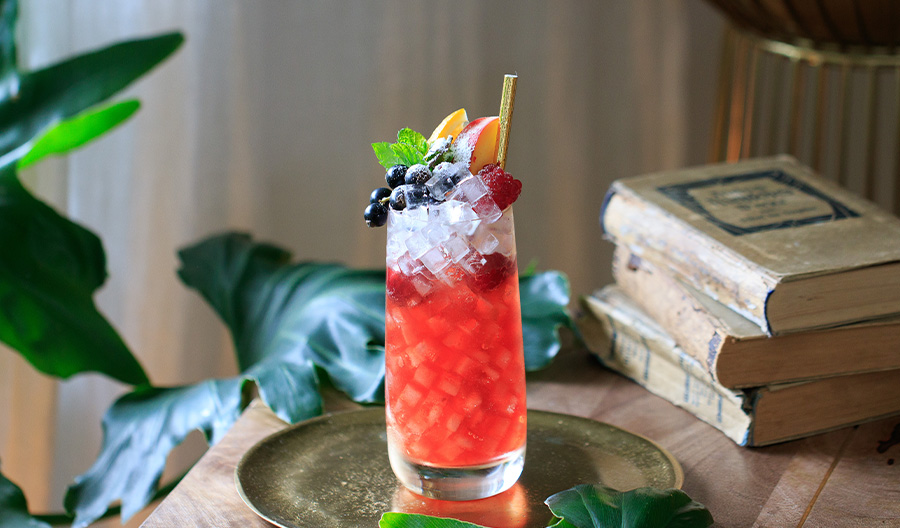Port lives amid a cloud of misconceptions: It’s often assumed to be overly sweet, and its red iterations are largely thought of as exclusively an after-dinner sip rather than as the versatile cocktail ingredient it can be. As for white port, many people haven’t even heard of it.
Of those who have, many people think it's sweet or a cooking wine. But some white ports can be incredibly complex; others can be a perfect addition of acidity to back up the in-season fruits.
White port has an amazing textural element that reminds me of fresh spring fruits. The flavor profile and acidity is reminiscent of green apples, unripe pears, juicy stone fruits like apricots and peaches.
White port is diverse in its own right, ranging from sweet to oxidative to bone-dry and mixes well in a range of cocktails, from tropical-style to Port & Tonics. It’s lively and fresh, herbaceous and floral, a perfect backbone to bright, summery cocktails.
It’s versatile in cocktails and not too obscure of an ingredient for an average cocktail enthusiast. Use it as a modifier, a base, or a split base.
What Is White Port?
The fortified wine calls for white grapes grown in Portugal’s Douro Valley, using varieties including malvasia fina, rabigato, moscatel, viosinho, godello, arinto, codega do larinho, and others. It’s made in the same way as red port and other fortified wines, by adding grape brandy to the fermenting wine juice, which stops the fermentation process and yields a wine with a higher alcohol percentage (usually between 16% and 20%) and varying levels of sweetness, depending on when the grape brandy is added. Styles range from sweet (or lagrima) to doce to extra seco (bone-dry).

How to Use White Port in Cocktails
In Portugal, your clear answer regardless of the time of day is a White Port & Tonic, light-bodied, low-effort, easygoing, and pleasantly bitter. So why mess with a classic?
White ports have a slightly higher sugar content than vermouths, which make them a touch more appealing when being used in Martini-style cocktails and two-part drinks. This can be in place of dry vermouth in a twist on the Bamboo, where it’s joined by the traditional sherry as well as apricot liqueur and honey syrup.
And as with vermouth, keep it in the fridge after opening. The non-vintage is quite young and has not gone through the full oxidation of older white port. So, left out at room temp, the flavor changes after a week or two. The point being: Store it in the fridge after opening. Plus, grabbing a chilled bottle of white port and splashing cold tonic into it makes for a great pre-dinner drink.
White port can be looked at as a substitute for other other fortified or aromatized wines, like vermouth and sherry, and for Americano-style wines. It makes a great modifier and can also work well as the base in many classic wine-based cocktails, such as [riffs on] a Sherry Cobbler or Chrysanthemum. In his twist on the latter, he adds a hefty pour of white port to the classic white-vermouth-and-Benedictine combination.

